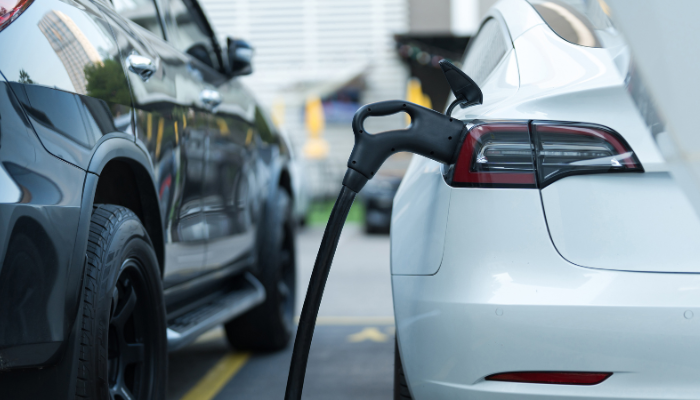
LATEST STORIES:


The Government of Canada is working to ensure that every vehicle sold in the country by 2035 will be zero-emission through its new Electric Vehicle Availability Standard.
It’s trying to increase the availability of electric vehicles across Canada so those who want to make the switch are able to.
Through the plan, Canada will require auto manufacturers and importers to meet annual regulated zero-emission vehicle sales targets.
Beginning in the 2026 model year, at least 20 per cent of vehicles offered for sale from manufacturers are required to be zero-emission vehicles.
It’s an attempt at a gradual phase-in approach to electric vehicle infrastructure to help Canada keep pace with the United States, the United Kingdom, the European Union, and several other major economies.
The federal government is also investing $1.2 billion to build 84,500 chargers across the country by 2029, further expanding the charger infrastructure.
READ MORE: Ontario funding projects aimed at using hydrogen to power electricity grid
“Getting more electric vehicles on the road is another example of how we are taking climate action while helping make life more affordable,” Environment Minister Steven Guilbeault said.
“And our investments to position Canada as a significant player in the global electric vehicle manufacturing and battery supply chain shows how we are taking advantage of the economic opportunities provided by the emerging low-carbon economy.”
Getting to 100% EVs & plug-in Hybrids is a win-win-win for Canadians:
Save thousands of $ on fueling & maintenance
⚡️Save the planet & our lungs from harmful emissions
Support a robust EV supply chain in CanadaThe EV Availability Standard drives us toward a better future. pic.twitter.com/xZFhPtDDvd
— Steven Guilbeault (@s_guilbeault) December 19, 2023
Auto expert Brendan Sweeney says the price of electric vehicles, which are generally higher than gas-powered models, may fall as the years go by.
“I think we also might see a point, I predict this by the early 2030’s, where not only do we reach price parity between electric vehicles and internal combustion engine vehicles,” says Sweeney.
“But we might also see the price and the cost of electric vehicles dip a bit, partly because the internal combustion engine vehicles that are being produced for the North American market are very large vehicles or luxury vehicles.”
The Canada Research Chair in Environmental Impacts of Energy and Transport Technologies says if this 100 per cent goal is met, it would have significant impact on climate change and human health.
WATCH MORE: First Canadian electric vehicle made from Hamilton steel rolled into town
“They have a very substantial reduction in greenhouse gas emission, including if we think about the manufacturing of the vehicle and the battery, which definitely adds some environmental impacts, which you more than off-set over the use phase,” said Daniel Posen.
“You also get fairly substantial reduction in air pollutants, so there’s the climate change question, but also the human health question.”
As part of the shift to electric vehicle production, automotive and battery manufacturers have already invested more than $34 billion towards establishing a battery supply chain in Canada.
The government says that in the first three months of 2023, around one in 10 new vehicles registered were electric.
However, less than 10 per cent of vehicles currently on the road are electric.